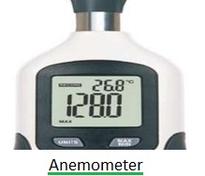Repeatability vs. Reproducibility: Understanding the Key Differences
Advertisement
When we’re talking about the consistency of measurements or experiments, two terms often come up: repeatability and reproducibility. While they both relate to how close output readings are, they differ in the conditions under which those readings are obtained. Let’s break down what each term means and how they differ.
Repeatability: Consistent Results Under Identical Conditions
Definition: Repeatability refers to how close your output readings are when you repeat the same measurement or experiment multiple times in a short period. The key here is that everything should remain as consistent as possible.
Think of it like this: you’re using the same measuring tape, in the same spot, and reading it yourself multiple times in a row. If your measurements are all very close to each other, you have good repeatability.
Here are the factors that need to stay the same for a repeatability test:
- Measurement conditions: The environment, like temperature and humidity, should be the same.
- Instrument: You should use the exact same measuring device.
- Observer: The same person should be taking the measurements.
- Location: The measurements should be taken in the same physical location.
- Conditions of use: How the instrument is used should be exactly the same each time.
Reproducibility: Consistent Results Across Different Conditions
Definition: Reproducibility, on the other hand, examines how close your output readings are when there are changes in how the measurement or experiment is performed. This means things like:
- Different methods of measurement.
- Different observers taking the readings.
- Different measuring instruments being used.
- Different locations.
- Different conditions of use.
- Different times of measurement.
Think of it as having different people use different measuring tapes in different locations to measure the same object. If they all get similar results, you have good reproducibility.
Key Takeaways:
- Both repeatability and reproducibility describe the spread or variation of output readings for the same input.
- The main difference lies in the conditions under which those readings are taken.
- Repeatability: Looks at the spread of readings when all measurement conditions are kept constant.
- Reproducibility: Looks at the spread of readings when measurement conditions are allowed to vary.
In simpler terms, repeatability is about how consistent you are, while reproducibility is about how consistent others can be. Both are important for ensuring that experiments and measurements are reliable and their results can be trusted.
Advertisement
 T&M
T&M 






